Historias de emigrantes, fotografías y arte / Emigrant stories, photographs and art

Ser un emigrante es decidir llevarte un día en una pequeña maleta, trozos de tu vida, tratando de recomponerla en otro lugar. Pero también implica dejar de tener una familia, y buscar en otros llenar esos espacios vacíos.
Me es complicado imaginar cómo fue la vida de aquellos emigrantes que viajaron desde el viejo continente a las tierras jóvenes de América, durante el siglo pasado, cuando las comunicaciones eran a través de cartas y el transporte era por barco.
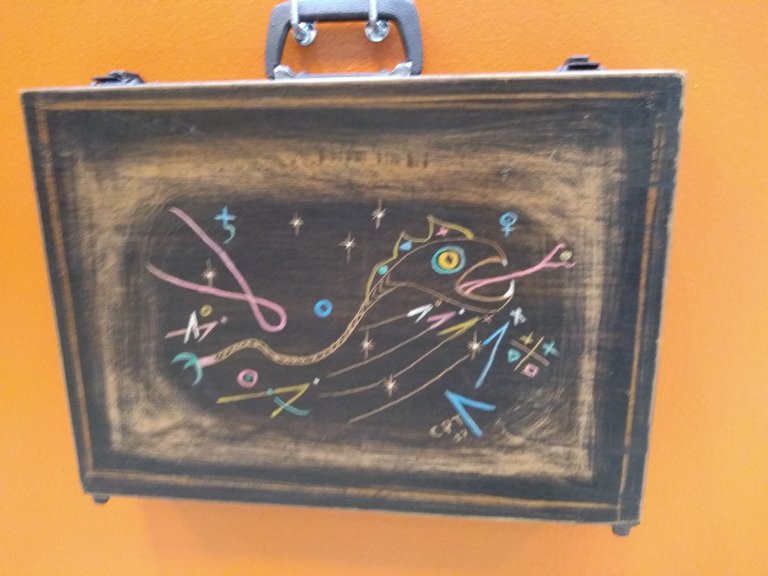
Cuántas angustias y tristezas traían o llevaban las encomiendas, con alguna que otra fotografía, para que la familia no olvidara los rostros, o e su defecto, pudieran ponerle una imagen a un recuerdo de alguien que había partido sin que hubiera la posibilidad de llorarlo a tiempo.
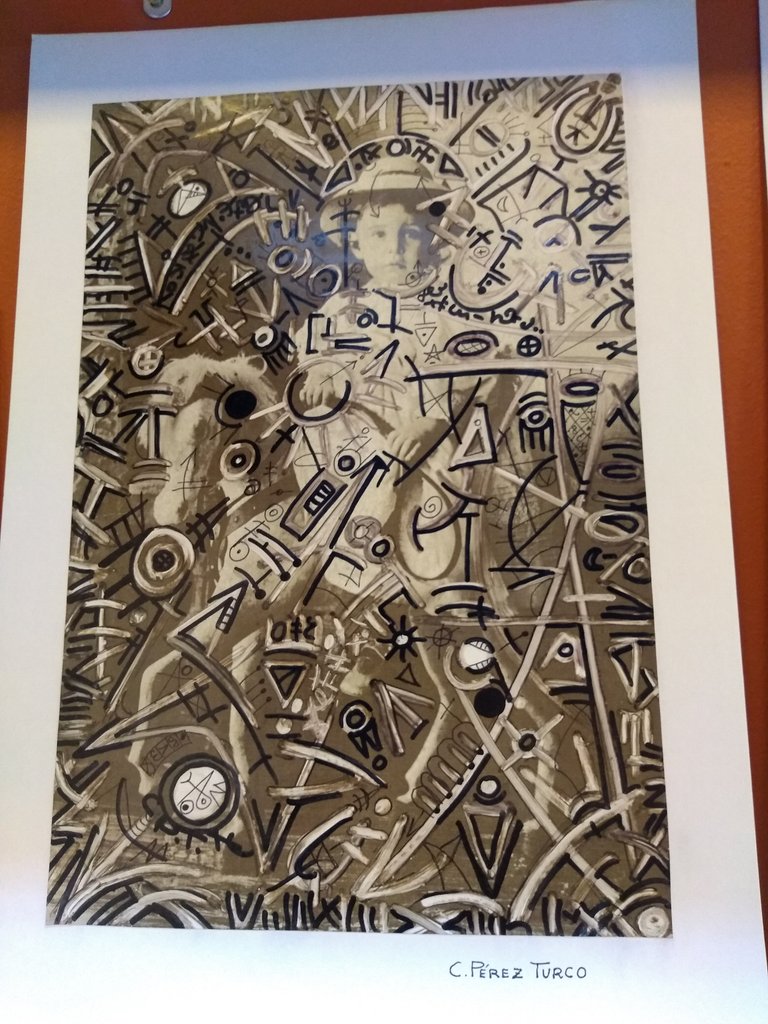
Y aunque en la actualidad tenemos muchas maneras de acortar esas distancias, resulta también complejo poder mantener una relación de esta forma, sin el contacto físico tan necesario, y acomodando los horarios cuando los seres queridos están del otro lado del planeta.
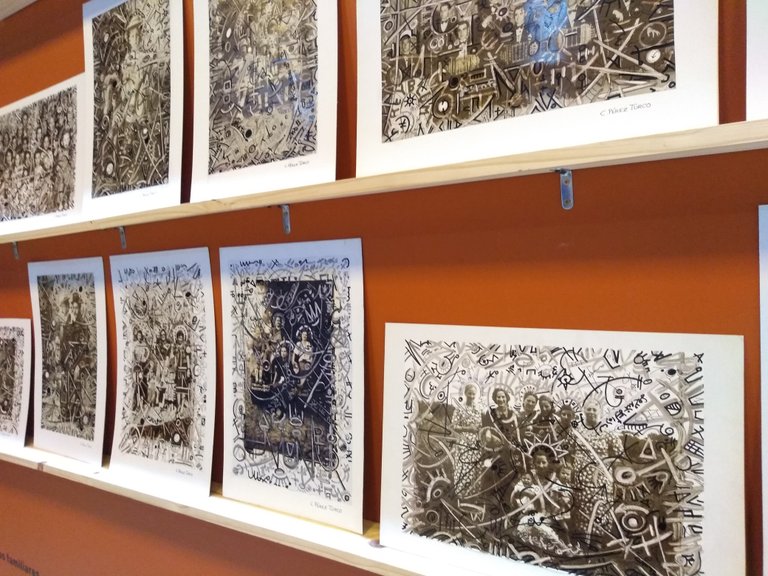
Ni qué decir, cuando en caso de presentarse alguna anomalía, los médicos pregunten sobre antecedentes familiares, de esos que nadie habla, tratando de ocultar lo que pareciera ser una deshonra.

Justo esta parte de la muestra del artista Carlos Pérez Turco que encontré en la casa de la cultura Leonardo Fabio de Lanús, me recordó esas historias que escuchaba sobre los abuelos de algunas amigas que vinieron a Venezuela luego de la guerra civil española o las hambrunas post segunda guerra mundial, y que ahora, muchos años después, me tocó vivir en carne propia.
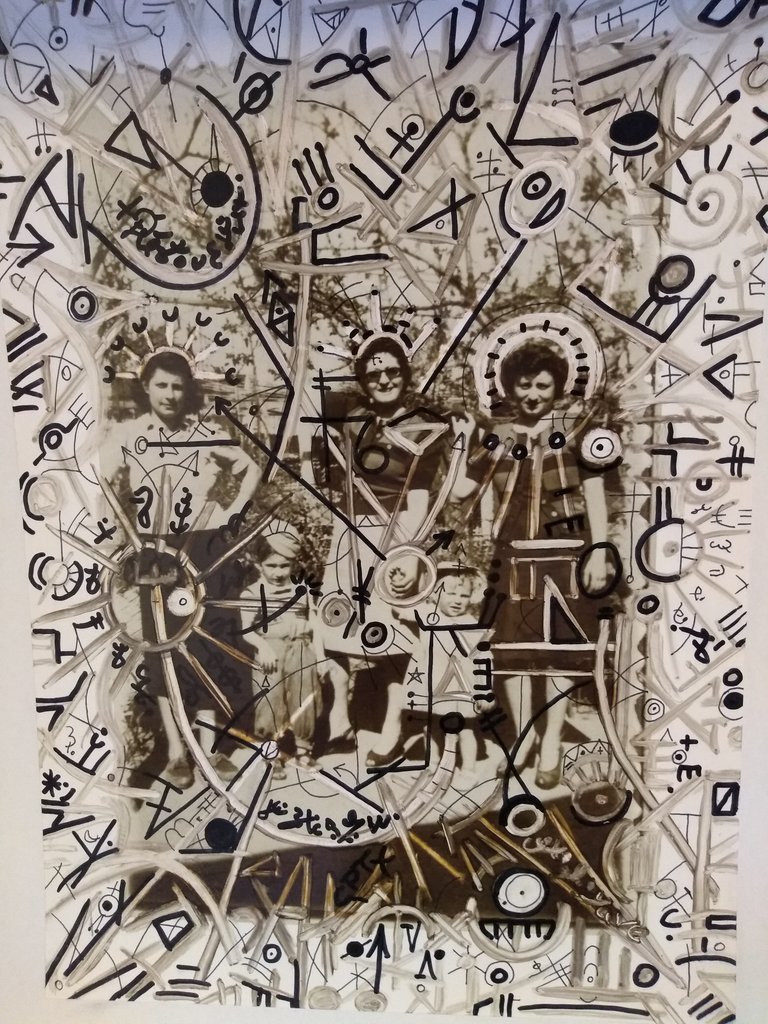
También fue como volver a ver los álbumes familiares llenos de fotos con personas que no sabía quienes eran, y que ahora recuerdo mucho menos.
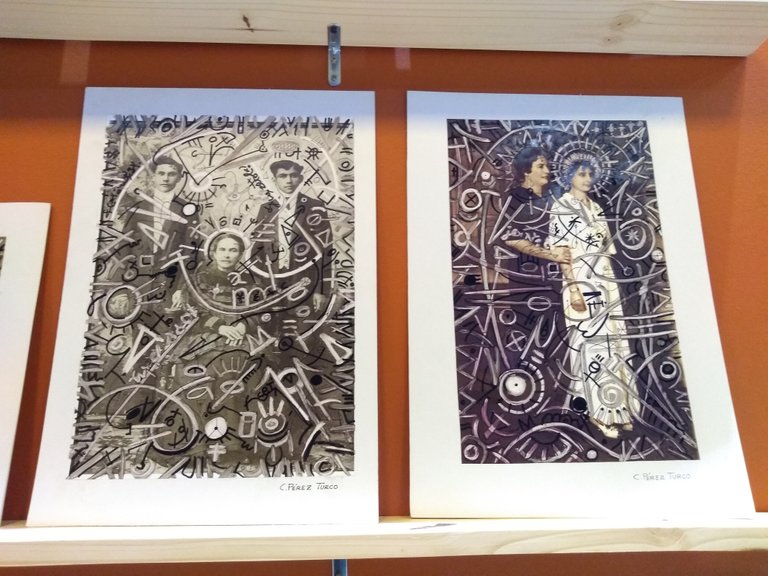
Pero en este caso, el autor le imprime a cada fotografía su toque particular, entendiéndose en cada trazo, alguna experiencia, emoción o desacierto que puede haber tenido el dueño de la imagen retratada. O puede ser también, un indicio de lo que le depara la vida en un futuro. Realmente son especulaciones mías, pero lo cierto es que de esos retratos antiguos, de personas que nadie recuerda ya, puede que surja la inspiración para una obra de arte, o también el descubrimiento de quienes dieron el primer paso para la generación de nuestra existencia como sociedad.

To be an emigrant is to decide to take with you one day in a small suitcase, pieces of your life, trying to recompose it in another place. But it also implies leaving your family behind, and looking for others to fill those empty spaces.
It is complicated for me to imagine how was the life of those emigrants who traveled from the old continent to the young lands of America, during the last century, when communications were through letters and transportation was by ship.

How many anguish and sadness they brought or carried the parcels, with some photograph or other, so that the family would not forget the faces, or failing that, they could put an image to a memory of someone who had departed without the possibility of mourning him or her in time.

And although nowadays we have many ways to shorten these distances, it is also complex to maintain a relationship in this way, without the necessary physical contact, and accommodating schedules when loved ones are on the other side of the planet.

Needless to say, when in case of any anomaly, doctors ask about family history, those that nobody talks about, trying to hide what seems to be a dishonor.

Just this part of the exhibition of the artist Carlos Perez Turco that I found in the house of culture Leonardo Fabio of Lanus, reminded me of those stories I heard about the grandparents of some friends who came to Venezuela after the Spanish civil war or the famines post World War II, and that now, many years later, it was my turn to live in my own flesh.

It was also like going back to family albums full of photos with people I didn't know who they were, and that I remember much less now.

But in this case, the author gives each photograph his particular touch, understanding in each stroke, some experience, emotion or mistake that the owner of the portrayed image may have had. Or it could also be an indication of what life has in store for him in the future. These are really my speculations, but what is certain is that from those old portraits, of people that nobody remembers anymore, may arise the inspiration for a work of art, or also the discovery of those who took the first step for the generation of our existence as a society.
Foto/Photo by: @mamaemigrante. Créditos al artista Carlos Pérez Turco por las obras presentes en esta publicación / Credits to the artist Carlos Pérez Turco for the artwork included in this publication.
Edición/Edited by @mamaemigrante using canva
Translated and formatted with Deepl
Posted Using INLEO
Congratulations @mamaemigrante! You have completed the following achievement on the Hive blockchain And have been rewarded with New badge(s)
You can view your badges on your board and compare yourself to others in the Ranking
If you no longer want to receive notifications, reply to this comment with the word
STOPCheck out our last posts:
Este post, además de hermoso, es muy importante. Recientemente ví cómo una amiga que logró salir del país era atacada en las redes sociales por los nativos de ese lugar. Hay personas piensan que migrar es cosa fácil, pero hay que armarse de un valor inmenso para sobrevivir lejos de tu tierra. Un saludo.